Testing and Assessment
To assess the structure and effectiveness of our device we performed finite element analysis and electromyography (EMG) testing.
Resistance Band Testing
| Band Color | Force Exerted (N) | Extension (m) | Stifness (N/m) |
| Purple | 7.9 | 0.21 | 37.62 |
| Red | 7.9 | 0.1 | 79 |
| Yellow | 7.9 | 0.13 | 60.77 |
| Orange | 7.9 | 0.08 | 98.75 |
The resistance bands were tested against a constant weight, and their corresponding extensions were measured. The Stiffness was calculated using the formula: Force/Extension.
Finite Element Analysis
To ensure our device components would not fail under our expected loads, we conducted mechanical finite element analysis tests using NX. To find the forces applied on our device we conducted a static analysis of our device using ASTM Standard F2276 designated safety factor of 2.5 for a 300 pound user performing a glute hamstring raise. Using analysis we applied these forces to the board of our device and the vertical posts.
Board FEA
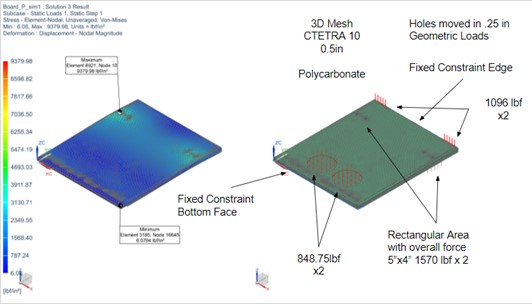
This model used a 3-D CTETRA-10 mesh made of polycarbonate. Fixed constraints were applied to the bottom edge of both the front and rear of the board. The determined max value for the stress is 9379 psi, confirming our material selection choice of polycarbonate as a material capable of handling this load.
Vertical Posts FEA
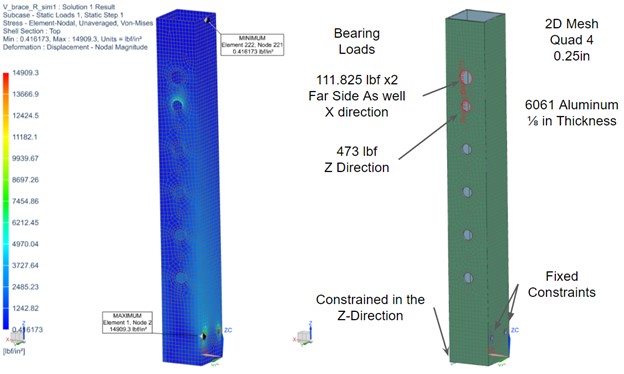
This model used a 2-D Quad 4 mesh made of 6061 aluminum. The bearing loads model the forces from the horizontal bars on the vertical support. The vertical support was constrained at the rear edge where it would be touching the board and the points where the vertical support is attached to the hinge.
EMG Testing
To ensure that our device is activating posterior chain and hip muscles, we performed EMG testing.
EMG Electrode Placements
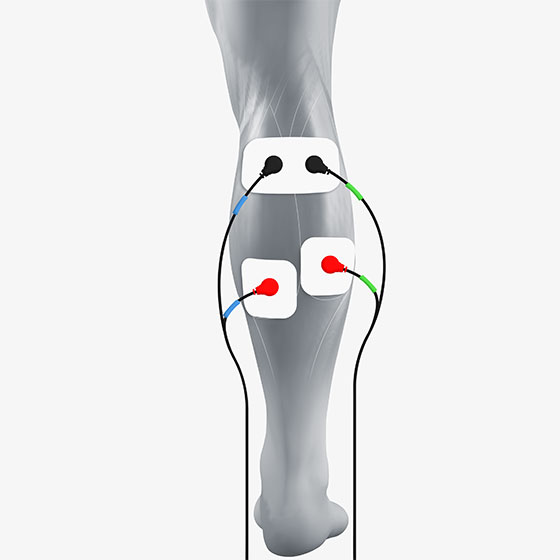
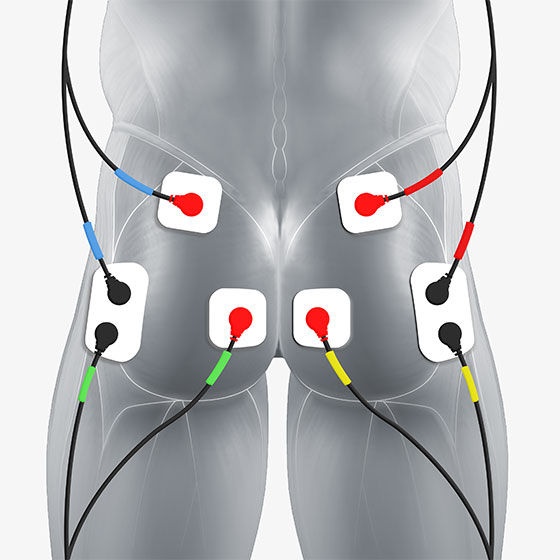
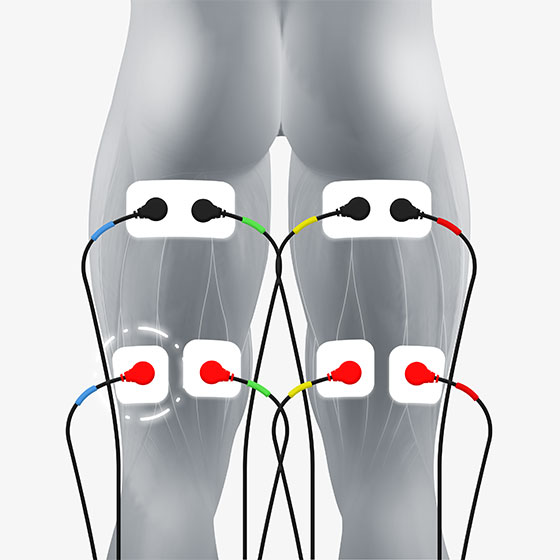
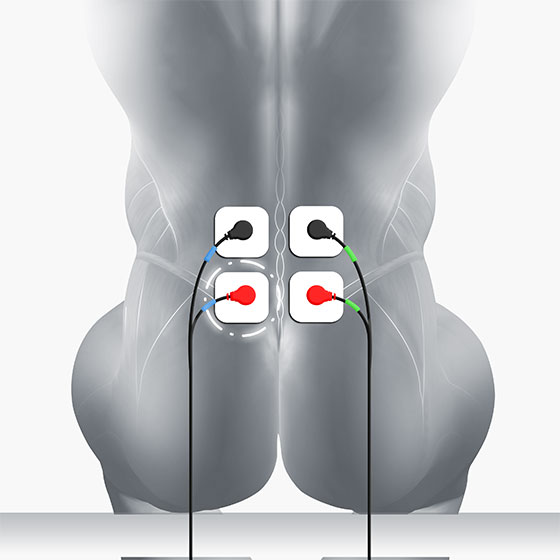
Results
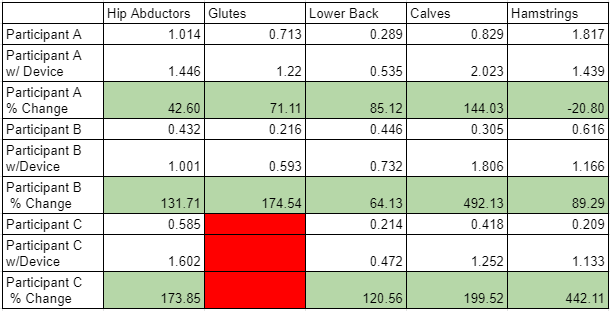
The participants varied in height, weight, time spent per week exercising, and familiarity with the exercises tested. The activation of each participant’s muscle group when exercising without the device was compared the activation of the muscles when using the device. All groups, with the exception Participant A’s hamstrings showed an increase in activation. Participant A’s hamstrings showed a decrease of 20% this could be due to incorrect performance of the exercise or poor EMG placement. Some muscle groups showed an increase in up to or greater than 400% of baseline. This data concludes that our device does increase the muscle activation for the majority of users and therefore the device achieves its main goal.
